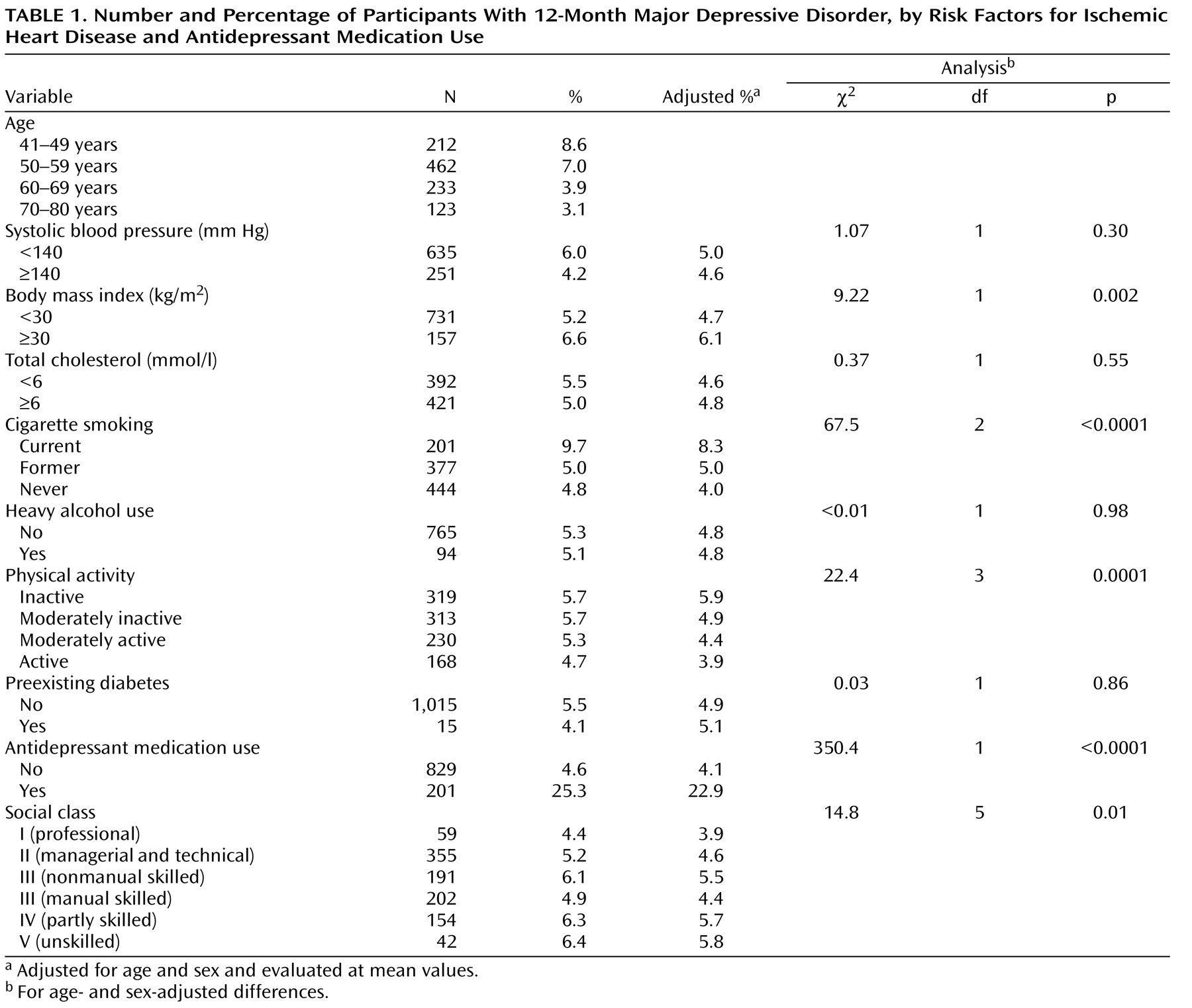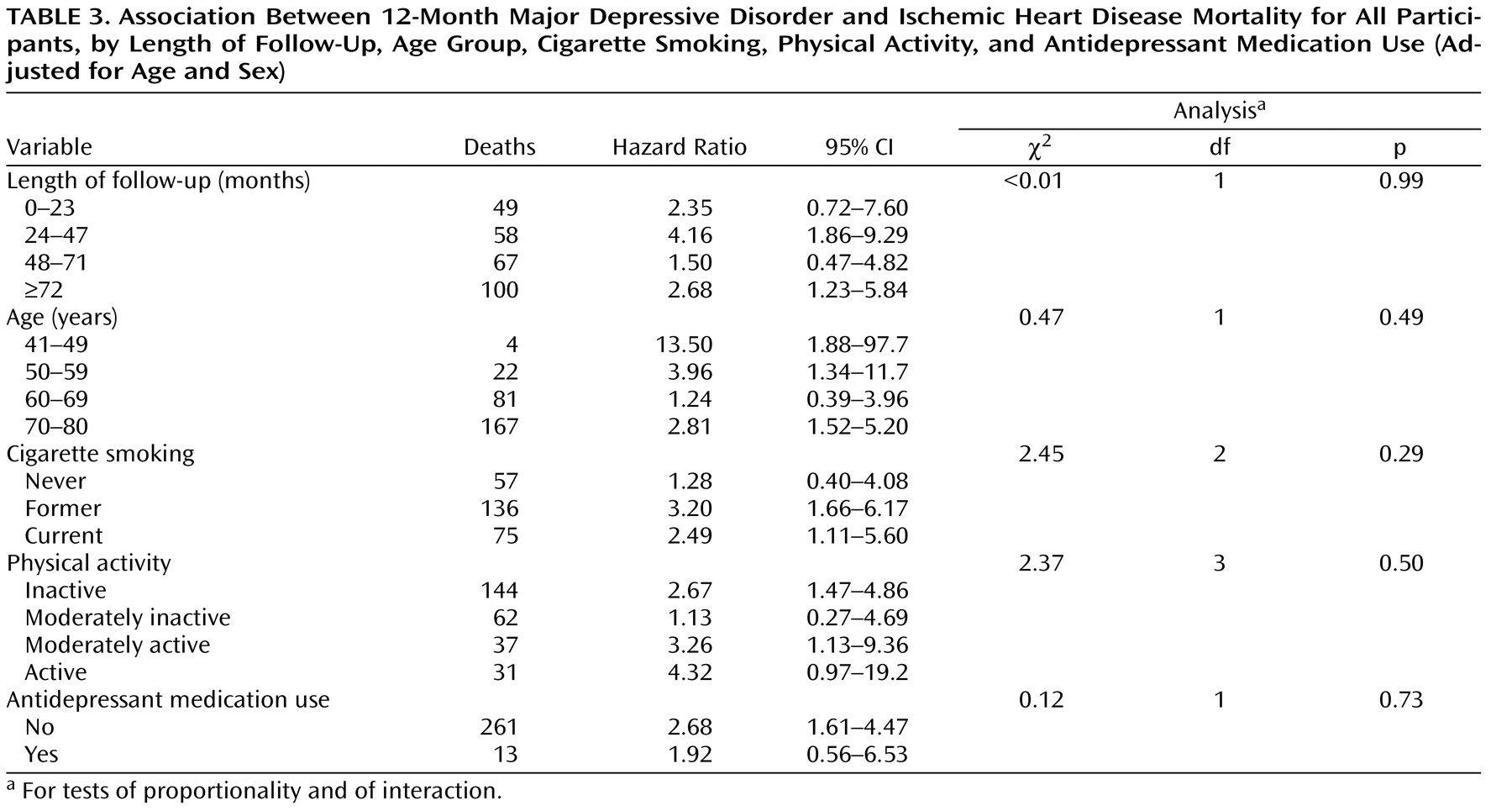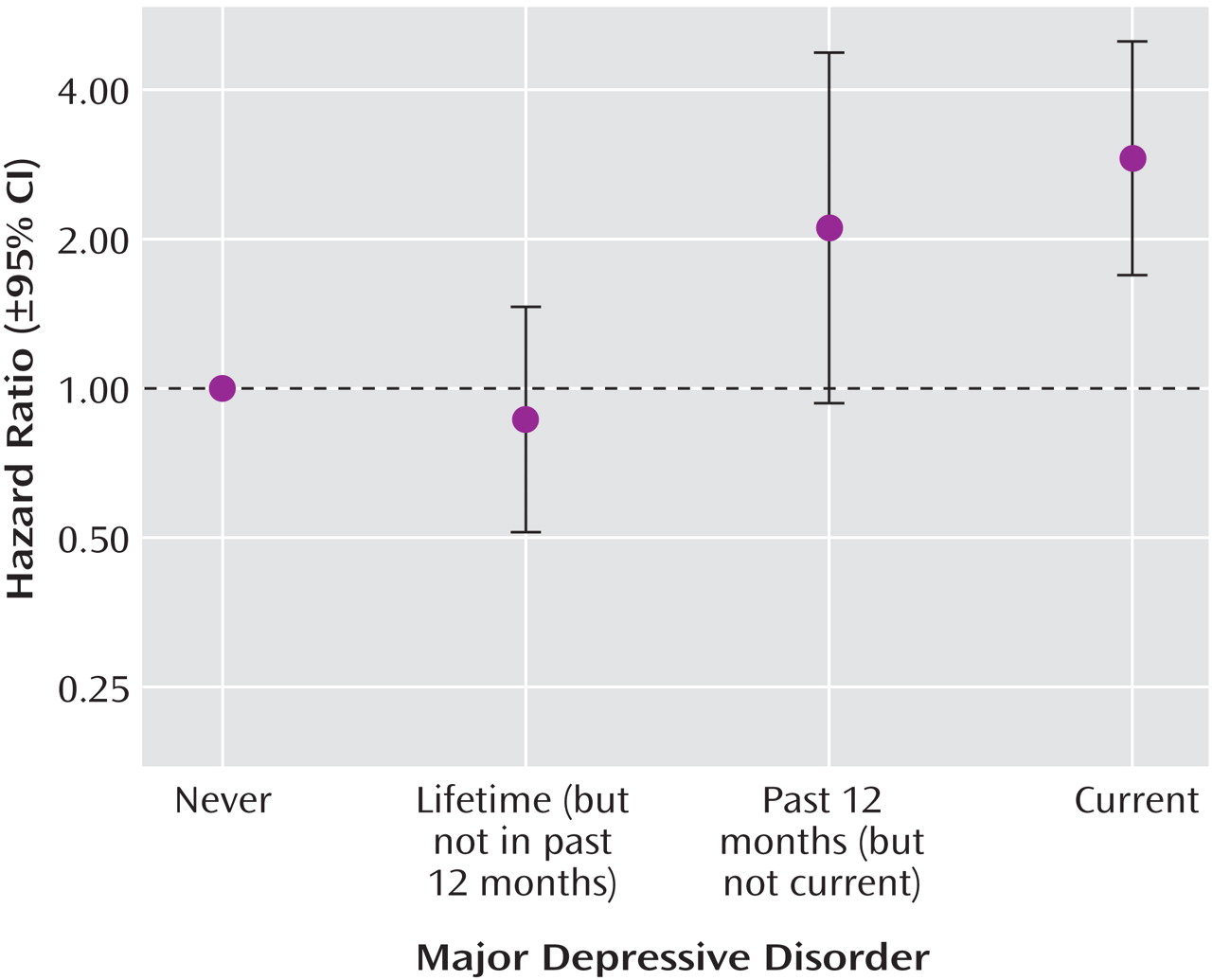The strengths of this study include the cohort size, prospective ascertainment of mortality endpoints (with 274 IHD deaths in more than 160,000 person-years of follow-up), availability of data for both men and women, baseline assessments that allowed adjustment for a wide range of risk factors often not available in other studies (including cigarette smoking, alcohol use, physical illness, cholesterol level, and antidepressant medication use), and depression defined according to diagnostic criteria. However, a number of important limitations warrant discussion. First, the structured self-assessment approach of the Health and Life Experiences Questionnaire represents a pragmatic means of enabling measures of emotional state, representative of core DSM-IV diagnostic criteria, to be included in a large-scale chronic disease epidemiological study. These measures have allowed discrimination of first onset and recurrence risks of depression
(37), demonstration of physical functional impairment associated with mood disorders relative to that associated with chronic medical conditions
(5), and evaluation of genetic models of association with depression
(38,
39) . Based on a subsample of these data, previous work has shown that prevalence estimates of DSM-IV major depressive disorder and associated demographic risk profiles are broadly similar to those derived from dedicated large-scale psychiatric epidemiology research studies, and that there was little evidence of reported episodes clustering in the period immediately prior to assessment
(20) . While international comparison of major depressive disorder defined in terms of diagnostic criteria requires caution
(40), recent work continues to provide evidence of similar prevalence rate estimates (see reference
41 for a review). For example, DSM-IV 12-month and lifetime major depression prevalence rates of 6.6% and 16.2% (ratio of 2.5:1) based on use of the Composite International Diagnostic Interview in the National Comorbidity Survey Replication
(42) compare to rates of 5.2% and 15.6% (ratio of 3:1) in this community study of somewhat older participants. Second, we are unable to exclude the possibility of residual confounding due to errors in the measurement of important potential confounding variables, such as smoking behavior, or from measures less commonly assessed, such as heavy alcohol use. Third, the restricted age range and other characteristics of the EPIC-Norfolk cohort may reduce the generalizability of our findings. Participation in the EPIC-Norfolk study involved commitment to subsequent follow-up assessments and the collection of detailed biological and dietary data. While these requirements resulted in the recruitment of a sample that included fewer current smokers, the cohort is representative of the general population of England in terms of anthropometric variables, blood pressure, serum lipid levels
(15), and physical and mental functional health
(43), and it includes participants in a broad range of socioeconomic circumstances
(44) . Fourth, our reliance on diagnostic codes for IHD on death certificates through national mortality statistics, which may be inaccurate
(45), may have led to misclassification of outcome such that the association with current depression may be due partly to an increased risk of all-cause as opposed to IHD-specific mortality.






